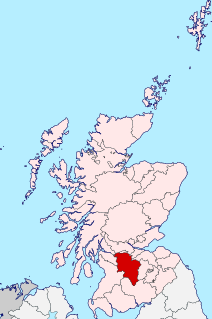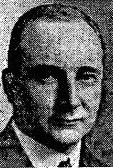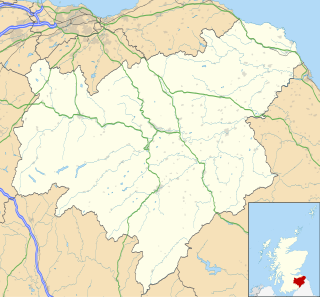John Lamb Murray (1838–1908) was a Scottish architect active in the nineteenth century.

The Scottish people or Scots, are a nation and Celtic ethnic group native to Scotland. Historically, they emerged from an amalgamation of two Celtic-speaking peoples, the Picts and Gaels, who founded the Kingdom of Scotland in the 9th century. Later, the neighbouring Celtic-speaking Cumbrians, as well as Germanic-speaking Anglo-Saxons and Norse, were incorporated into the Scottish nation.

An architect is a person who plans, designs and reviews the construction of buildings. To practice architecture means to provide services in connection with the design of buildings and the space within the site surrounding the buildings that have human occupancy or use as their principal purpose. Etymologically, architect derives from the Latin architectus, which derives from the Greek, i.e., chief builder.
Murray was born near Biggar, South Lanarkshire to a family of the minor landed gentleman. [1] He owned the estates of Heavyside and Stains. [1] He originally trained as a landsurveyor, working for several larger landowners in the area. However he became a self-taught architect and as civil and mechanical engineer, developing specific skills water power and electric lighting. [1] he also had a strong interest in music, buildings a large pipe organ. [1] This was originally installed in his workshop at Heavyside but after he had water power in his house, he re-installed it there. [1]

Biggar is a town and former burgh in South Lanarkshire, Scotland. It is situated in the Southern Uplands, near the River Clyde, on the A702. The closest towns are Lanark and Peebles, and as such Biggar serves a wide rural area. The population of the town at the 2011 census was 2294 although by the mid-2014 estimate it had grown to 2320.
Murray was the architect of Hartwood Hospital, after the Lanarkshire Lunacy Board set aside the results of a competition to select an architect. The ensuing work kept Murray's business very active until 1895. [2]

Hartwood Hospital was a psychiatric hospital located in the village of Hartwood near the town of Shotts in Scotland.
In 1896 Murray became a pioneer motorist. He bought a Panhard Levassor and invested in Albion Motors which was established by his son Thomas Blackwood Murray and Norman Fulton. [2]

Panhard was a French motor vehicle manufacturer that began as one of the first makers of automobiles. It was last a manufacturer of light tactical and military vehicles. Its final incarnation, now owned by Renault Trucks Defense, was formed by the acquisition of Panhard by Auverland in 2005, and then by Renault in 2012. In 2018 Renault Trucks Defense, Acmat and Panhard combined under a single brand called Arquus.

Albion Motors was a Scottish automobile and commercial vehicle manufacturer.











